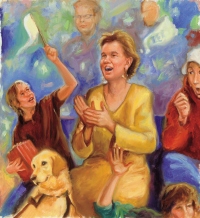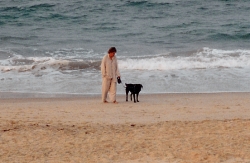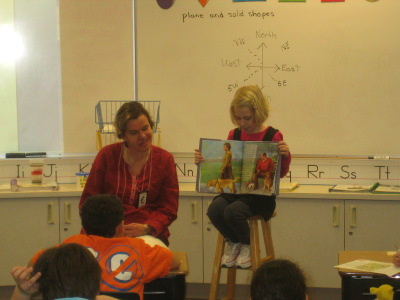David Paterson: Unlikely Hero
April 3, 2010 • 7 Comments • Posted in baseball, blindness, book tour, Braille, travel, Uncategorized, visiting schoolsThis Tuesday Hanni and I head to Long Island – we’ll be visiting three different schools while we’re there. During our last visit, I thought it was kismet that we were there the very day David Paterson was named governor. David Paterson lost sight in his left eye and much of the sight in his right eye after an infection when he was a baby. When he took office in March, 2008, he became the first blind governor ever in the history of the United States.
Paterson’s appointment gave me a great opportunity to brainstorm with the Long Island school kids we were visiting. “How will your new governor be able to read?” I asked. We talked about Braille. We decided a talking computer might help. If neither of those reading tricks worked, well, hey, he’s the governor. “He could just make his workers read aloud to him!” one third grader exclaimed.
Maybe the workers would give speeches for him, too. “Or maybe he has a good memory,” one fourth grader surmised. “Maybe he’ll just memorize the words to the speeches he gives!” Turns out that fourth grader was right. After Paterson was sworn in, journalists marveled at his memorization skills. Here’s an example from a 2009 column in the New York Daily News:
Paterson has been largely out of sight over the past week with no press conferences or public appearances. It turns out that’s because he has been spending most of his time working on committing his speech to memory. He said it has taken up about 60 hours to memorize his State of the State, which he has done by listening to a recording of the speech one minute at a time
These days journalists are not so impressed, however. Paterson’s memory seems to be failing.
Last month the governor was accused of violating state ethics laws when he asked for five free tickets to last year’s World Series. The seats were right behind home plate. At face value, they cost $425 each. Governor Paterson claimed he was attending the game “in an official capacity” and didn’t have to pay for them.
But then news came out that Paterson did not perform any official duties during Game 1 of last year’s World Series. Already drowning in a scandal (members of his administration, and maybe the governor, too, intervened in a domestic violence proceeding involving one of his top aides), Paterson faced calls for his resignation. He switched his story about the Yankee tickets.
The governor had always intended on paying for the tickets, he said. The check eventually sent to the Yankees was backdated. The handwriting on the check did not match Paterson’s signatures on other official forms . The Governor with the extraordinary memory can not explain the handwriting mix-up. Nor can he explain why the check was dated Oct. 27, the day before the game.
. The Governor with the extraordinary memory can not explain the handwriting mix-up. Nor can he explain why the check was dated Oct. 27, the day before the game.
Selfishly I was hoping that the first blind governor might do better than this. But hey, I’m from Illinois. I’m used to governors acting stupid. The good news, if there can be good news, in all of the New York governor mess: None of the stories I read about the scandals mentioned one word about Paterson’s blindness. The fact that he cannot see is not the most interesting thing about him any more. Reporters don’t feel sorry for Governor Paterson because he is blind. They’re not going easy on him. They hold him up to the same standards as any other governor. In a twisted way, Paterson’s poor judgment helps prove a point disability advocates have been trying to make for decades. When it comes right down to it, people with disabilities really aren’t all that different than anyone else.






